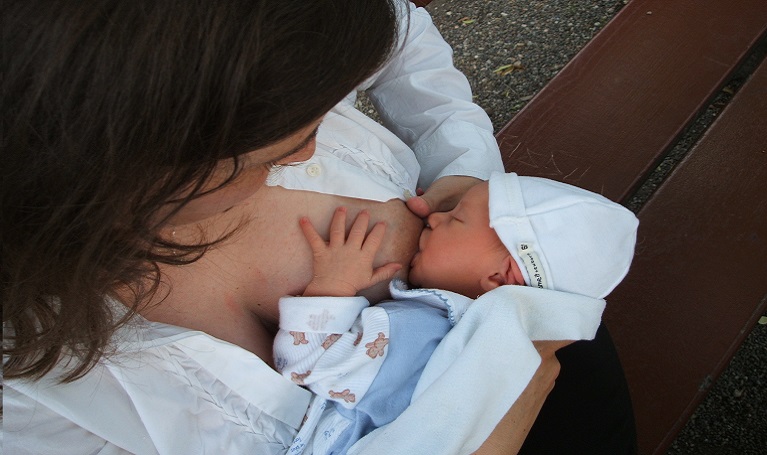As weaning is becoming established, whether you’re baby-led weaning, using the traditional method of introducing new tastes in puree form or a combination of both, it is important that breastfeeding or your baby’s milk intake is not adversely affected, as this is where most of his or her nutrition is coming from.
As your baby gets older, he or she will become more interested in meal times, what and how you eat, different textures and the food on your plate which comes in a variety of bright colours. But before your little one can join in, there are a few important milestones he or she needs to reach.
Here are some tips about how to increase solids without impacting on milk intake.
Weaning: milk first then solids
Before the age of 12 months, milk is more nutritionally valuable than solids, as it is easily broken down, absorbed and utilised, so don’t be in a rush to introduce solids. Your baby continues to need a certain number of calories each 24 hour period and when you start introducing solids, you will find that calories aren’t always available in baby’s solid meals, especially if you are offering pureed apple, pear, carrot and so on. Prioritising your baby’s calorie intake is the easiest way to introduce solids without impacting breastfeeding – if you can see that he or she is filling up on pureed apple instead of creamy milk, you need to step in and make a change.
The more milk your baby gets during the day, the better your baby will settle and sleep for you at night. If your baby starts waking more frequently at night, you need to reassess your solid feeds and ensure that milk intake gets priority.
Introduce feeds according to your baby’s size
Start very slowly – often mums will offer 1 meal a day for 5-7 days whilst they monitor changes in feeding, sleep or poop patterns. If there are no changes, another small solid meal (1 teaspoon of baby rice + 15ml of breast milk or formula) is added. Then another meal is added a few days later. This works well for small babies as they will have small tums and need to keep space for milk!
- Small babies
Day 1-5: 1 x small meal a day
Day 6-11: 2 x small meals a day
Day 12–18: 3 x small meals a day
Big babies may actually feel quite cross and frustrated and the tiny portions so instead of doing 3 small meals, you can gradually add an additional teaspoon of food to your baby’s solid meal. Keep monitoring your baby’s feeding, sleep and poop patterns and if nothing changes then move to introduce the second meal of the day. You will see below that we don’t want to increase the amount of baby rice too quickly or your baby may feel constipated and as it is thicker – may change feeding patterns.
- Big babies
Day 1–5: 1 x small meal a day (eg 1 teaspoon baby rice + 15ml breast milk)
Day 6–11: 1 x medium meal a day (eg 1 teaspoon baby rice + milk + 1tsp pureed apple)
Day 12–18: 1 x large meal a day (eg 1 teaspoon baby rice + milk + 2 tsp pureed apple)
Introduce one new food at a time
Always only introduce 1 new food at a time and use the same food for 3 days before adding another. This way you can keep track of which foods your baby likes and any reactions your baby has will easily connected to a new food.
Offer new foods in the morning or afternoon
Offering solids in the morning or at lunchtime, will enable you to keep an eye on your little one, give them the chance to digest food before bed time and (erring on the side of caution!) enable you to get to your GP quickly if something you have given your baby causes a reaction. For that reason it’s best not to offer new foods at the end of the day when everything is closing and you may have to wait all night to see a doctor.
Introducing solids is a lot of fun, but it’s messy and it can be a worry too – especially if your baby is less than enthusiastic! Try not to feel too stressed about how much your baby takes, introducing more meals or new foods too quickly or ‘getting it right’. Just think of it as a brand new experience for your baby, an exploration of tastes and textures of a whole new area – food. The introduction of solids is merely a practice run and helps teach your baby to move food around in his or her mouth safely, whilst still getting all the nutrition he or she needs from his or her milk intake.








Leave A Comment
You must be logged in to post a comment.